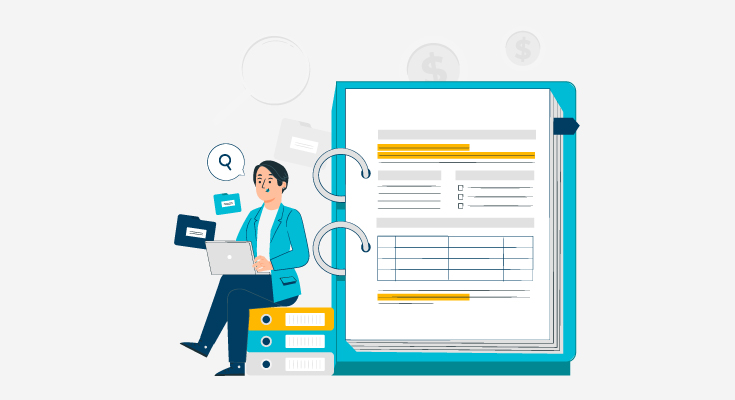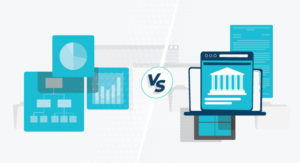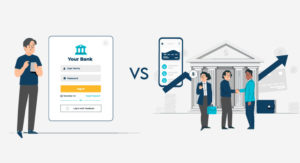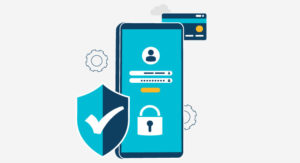How Do Mortgage Lenders Check & Verify Bank Statements?

If you seek a mortgage for buying a new home or for refurbishing, it has to be approved by a mortgage lender for you to get your loan. One of the major factors involved in loan approval is the verification of the borrower’s financial information, but how do mortgage lenders verify bank statements for loan approval?
Banks and other financial institutions may demand a “proof of verification deposit” form to be filled in and sent to the borrower’s bank for process completion. A proof of deposit may also require the borrower to provide a minimum of 2 consecutive months’ bank statements. During the loan approval process, if you’ve ever wondered “Why is verification of bank statements for mortgages required?” the answer is to reduce the chances of people with fake documents acquiring funds for illegal activities.
With thousands of sophisticated technologies out there, it doesn’t take more than minutes to forge bank statements and other documents. Keeping this in mind, mortgage lenders are legally obligated to identify and authenticate bank statements.
In recent years, there have been multiple instances where mortgage lenders have been scammed out of their money with fake bank statements. To save themselves from such cases of financial fraud, mortgage leaders need to find ways to check and verify bank statements.
Understanding How to Verify Bank Statements?
To approve a mortgage application, mortgage lenders need to verify a series of details. These include current income, assets, savings, and borrowers’ creditworthiness.
During the process of applying for a mortgage for a property purchase, the lender can and will ask the borrower for proof of deposit on the property. The lender then is asked to verify that the funds required for the home purchase have been transferred to a bank account and can now be accessed by the borrower.
Proof of deposit is the only way for a mortgage lender to verify if any sort of transaction has taken place before applying for the mortgage. Proof of deposit serves another purpose for the lender. Using the proof of deposit, the mortgage company can verify if the borrower has enough funds in their account to make a downpayment. If they have insufficient funds, it’s generally considered a red flag during the lending verification.
Usually, a borrower pays a 20% down payment for the home. If the full cost of the home is $200,000 then the borrower will need to pay $40,00 upfront. The lender has to verify if the borrower has enough in their account to make the closing costs that are included in a new mortgage.
The borrower has to provide the lender with the two most recent bank statements to confirm they have enough money for a downpayment. The mortgage company then reaches out to the borrower’s bank to verify if the information available on the bank statement is authentic or not. This is one of the most common ways how to verify bank statements during mortgage approval. The digital age has made it easier for fraudsters to fabricate fake bank statements and documents, which can be hard to distinguish from original statements.
Types of Documents in Mortgage For Verification
A lender has to submit a POD (proof of deposit) form to a bank to receive the confirmation of the loan applicant’s financial information. There are other ways a lender can verify if the borrower’s financial information is authentic or not. However, the document required for verification can differ from bank to bank. Here are the most common types of documents in mortgage approval:
- Account number
- Account type
- Open or closed status and opening date
- Account holder names (these are the official owners of the account)
- Balance information. (Including current account balance, account balance over two months/periods, or average bank account balance)
- Account closing date and the balance at the closing time (if required).
A lender has the right to refuse a mortgage if the documents don’t satisfy the verification requirements.
Why is Bank Statement Verification Needed?
Why do mortgage lenders need bank statements? To reduce the risk of the use of acquired funds by the borrower for illegal activities such as terrorist funding or money laundering. Lenders have the right to ask for a borrower’s bank statements and seek POD from the bank; some cautious lenders can ask for both of them. Lenders use POD and bank statements to ensure that the person is eligible for a mortgage.
Some lenders tend to ignore a once-in-a-lifetime overdraft on the borrower’s account during the account history verification. Although if a consumer has numerous overdrafts, then giving a loan to the consumer may be considered a risk for the bank.
Importance of Frictionless Lending Process in Banking
Removing friction from the lending process has been one of the biggest challenges for banks. The latest report suggests that banks that have been using digital methods for lending have seen better customer-business relationships.
Digital methods can help banks address the pain points customers face during their lending journey.
The banking industry has seen an upward growth toward digital adoption in the past 5 years. But, the lending industry has been left fairly untouched till now.
Consumers want the same level of convenience while lending as they get with other parts of their financial journey. Banks can do a lot of things to make sure that the lending experience is as seamless as possible.
How Banks Can Make Lending Frictionless?
FinTechs all over the world are offering incredible solutions that banks can leverage. Take DIRO’s bank verification solution, for example. It can cut down the customer verification time by more than 70%.
100% proof of verification combined with reduced time can lead to a great customer experience. Here are some things that financial institutions can do to reduce friction in lending:
1. Keep a Customer-Centric Approach
More and more customers are moving to digital banking channels. Banks have quickly transformed to keep up with demands. Most customers want all their borrowing data in a single place, especially if they trust their bank.
More than anything, a customer wants convenience and a time-saving process. Banks need to do more than just build an online lending application. If the process is too complicated, or way too long, then customers won’t fill it.
A financial institution’s approach should be focused on making a customer’s journey easy.
2. Make Use of Established Trust
While FinTechs offer better options, more control, and flexibility, customers are more likely to approach a bank for borrowing. The reason is simple, banks have a better reputation than newly set-up FinTechs.
Over 40% of customers would always choose their bank for borrowing, 27% are not sure, and others may be inclined toward FinTechs. This data comes from a report conducted by DepositAccounts.
Financial institutions should look forward to leveraging their reputation while working with consumers. They can use their existing platforms, integrate the latest tech into them, and make them more consumer-friendly.
The rest of the stuff is what banks have been doing for years, I.e., compliance, customer financial health management, mitigating credit risks, and more.
3. Leverage Technologies
As customers want convenience, there’s nothing better than using technology. To build a frictionless lending experience, financial institutions need to focus on building a flexible, cloud-based platform that can support all kinds of integrations.
Using open banking APIs allows banks to merge all the sections of the process into a single platform. Without these technological advancements, banks will be left behind in the past while FinTechs win the race.
If a financial institution can implement these strategies, it’ll be able to offer its customers what they want.
How does DIRO verify Bank Account Statements?
As we mentioned above, it is getting easier and easier to fabricate fake bank account statements. With DIRO, you can verify bank statements with automated user consent and secure impersonation checks anywhere across the globe. DIRO can verify all account information, including bank statements. Banks, financial institutions, and FinTechs can verify these statements using the DIRO bank verification service.
DIRO’s incredible technology can verify any kind of bank document using simple steps. All a user has to do is log in and verify bank statements online on a secure browser. It facilitates improved user experience, reduces the risk of financial crime, and provides instant bank verification.
That’s not all you can use DIRO’s document verification technology for; users can access and verify any kind of bank information from any web source. One of the major ways to verify bank accounts is by processing micro-deposits. DIRO’s technology reduces the account verification time from 3-5 business days to mere seconds.
Mortgage lenders, banks, financial institutions, and FinTechs can make use of the DIRO’s award-winning document verification technology to streamline their process of bank account and bank statement verification.
FAQs
1. How do Mortgage lenders verify bank statements?
Some mortgage providers ask you to submit bank statements, which they verify either electronically or manually. Other lenders may contact your bank directly and ask for verification.
2. What do mortgage lenders look for while verifying bank statements
The primary factor mortgage lenders are looking to verify is your financial health. To do this, mortgage lenders verify your financial accounts, balance information, account holders, interest information, and account transfers.
3. How does DIRO help in verifying bank statements?
Mortgage lenders can use the DIRO bank account verification solution to prevent the use of fake bank account statements for mortgage applications.
4. How do underwriters look at bank statements?
The exact information required by the underwriter may depend on individual to individual. Some underwriters will be satisfied with just 1 or 2 months ‘ bank statements, while some will require proof of deposit.
Summing Up
Bank statements are a crucial part of getting a mortgage approved. While getting your mortgage approved by a lender may be a challenging process, having the right information can make all the difference. Lenders can use DIRO’s bank account verification solution to reduce the risk of fraud involved in mortgage lending and offer a superior experience to the end customer.













